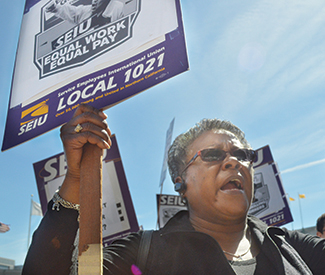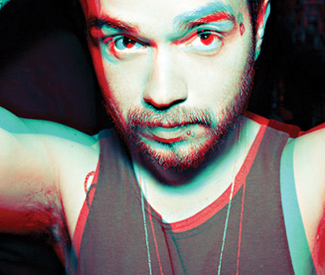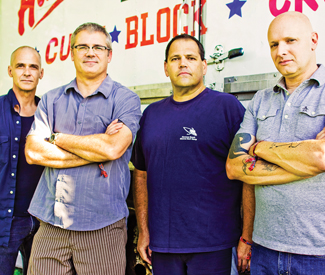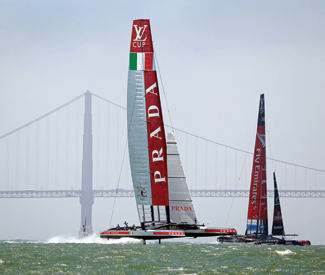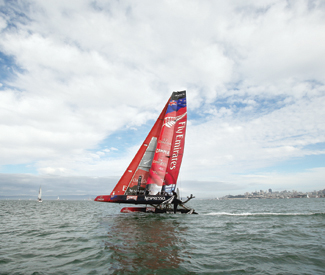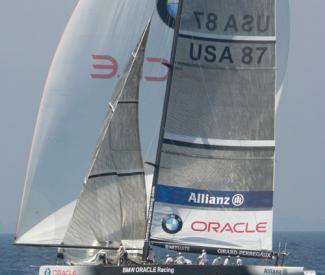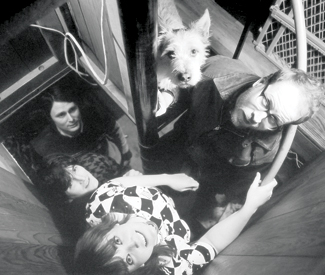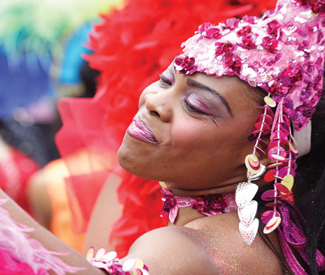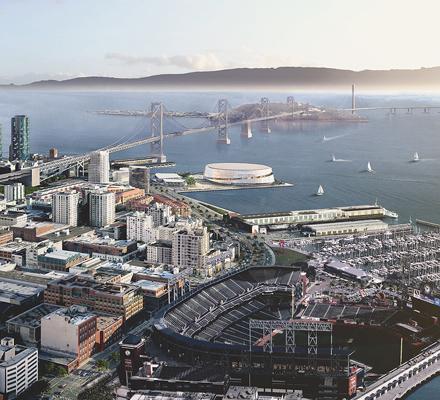San Francisco is moving into the heart of city budget season, with the Board of Supervisors Budget and Finance Committee holding detailed budget hearings over the next month to modify the $5.9 billion budget that Mayor Ed Lee introduced on May 1. Lee’s budget had a $66.7 million shortfall in the General Fund for the coming year, which he needs to close with a revised budget by June 1, as well as a $133.4 million budget hole the following fiscal year.
We at the Bay Guardian are here to help, because this is a mismanaged city that has some severely misplaced fiscal priorities right now. Although San Francisco’s booming economy means this will be a far less painful budget season than previous years, the city still has a structural budget deficit and lingering damage from the administration of Gavin Newsom, who slashed services and raised a variety of fees to address big budget deficits without raising taxes.
The moment is now, when we have more revenues than expected — and more money than we’re likely to have again for awhile given boom-bust business cycles and our over-dependence on the volatile tech sector — to finally create a city budget that sees to the needs of all San Franciscans.
WHAT WE SHOULD BE FUNDING
Medical Examiner’s Office Families now have to wait at least six months to find out how their loved ones died in San Francisco, which is new, preventable, and unacceptable. Short staffing and slow turnaround times have led the National Association of Medical Examiners to downgrade this office’s accreditation from “full” to “provisional.” The city budget should provide the staffing needed to process autopsies and medical reports as quickly as the examiners and laboratories can perform them and help give grieving families the closure they’re being denied for budgetary reasons.
Infographic: Click here for the full page inforaphic (also in this week’s print edition) of Cash backwards.
Public health In a recently issued report, nurses at San Francisco General Hospital represented by SEIU Local 1021 publicly warned of dangerously low staffing levels. “Our patients frequently do not receive the level of care required by state law, hospital policies, or modern safety standards,” they wrote. The concerns are especially worrisome in the Emergency Department, where core staffing of 22 nurses per shift dropped to 17 in recent months, or sometimes down to 11. “As a result, an average of 11 the Emergency Room’s 26 beds are closed while the Hospital goes on diversion,” turning away ambulances. “Over the year, our trauma center, SFGH, uses 3 percent more beds than budgeted—which indicates a dangerous lack of ‘surge capacity’ to absorb extra patients in the event of a natural disaster.” The report noted that vacant positions are technically budgeted in, but lingered filled.
911 dispatchers California law mandates that 90 percent of 911 calls be answered in 10 seconds or less; in San Francisco, that number often drops to 60 percent or lower. In early April, 911 dispatchers gathered at the city’s Department of Emergency Management to say that chronic understaffing is forcing dispatchers to put distressed San Franciscans on hold, or to force new callers to wait longer than 10 seconds before answering. “When a mother calls 911 because her baby isn’t breathing, 10 seconds matter. San Francisco 911 dispatch department is understaffed and needs to be improved,” say dispatcher Sean Dryden, calling for the city to put more resources into the system.
Activating surplus property Last week, the California State Assembly passed legislation that would give affordable housing developers the right of first refusal for “surplus” lands owned by local governments, thereby strengthening an existing priority for use. San Francisco has at least 42 surplus properties that could conceivably be converted into affordable housing projects, if resources were dedicated toward facilitating such partnerships and prioritizing this important need. “There is very little land available for affordable housing development,” says Assemblymember Phil Ting, who authored the legislation, which is now headed to the Senate for final approval. “These precious properties should become homes for working people.”
Homeless services In the past 10 years, San Francisco has lost about one-third of its homeless shelter beds, while about half of the city’s drop-in center capacity was also slashed, longtime advocate Jennifer Friedenbach, director of the Coalition on Homelessness, told us in a recent interview (see “San Francisco’s Untouchables,” March 24, 2014). The city can and should do more to provide a safety net for those in the precarious position of sleeping on the streets. And on a related note, city contracts for providing short-term stabilization beds for the homeless should not be awarded to slumlords who have been cited so many times for Health Code violations that they’re being sued by the City Attorney’s Office. Surely city agencies can find landlords who don’t endanger their tenants’ health and wellbeing through chronic neglect of their properties.
Pedestrian safety San Francisco spends $15 million annually on pedestrian injuries, according to the Department of Public Health, and 20 pedestrians were killed by vehicles on the streets of San Francisco in 2013 (including 6-year-old Sofia Liu on New Year’s Eve). Investments in safe streets for pedestrians saves the city money, and saves lives — but all of that counts on making the right investments. WalkFirst, the city’s pedestrian safety program, identified San Francisco’s most dangerous intersections, main in the Tenderloin and downtown, where there is a crucial need for safety modifications. Though the mayor pledged $50 million over five years to improve those intersections, that money depends on November transit ballot measures (including the vehicle license fee increase he’s now waffling on even placing on the ballot). If they fail, only $17 million will be available for pedestrian safety work. But even that amount barely scratches the surface: WalkFirst identified $240 million worth of street improvements needed to make San Francisco safe for walking.
Bike infrastructure The city has made strides in recent years to build out its bike infrastructure, but it still has miles of roadway left unsafe for bicyclists. The city identified many intersections and roadways in need of better bike infrastructure in its 2009 Bicycle Plan. Five years later, many of the identified “near term” projects still need big improvements: the Broadway tunnel; Golden Gate Avenue and Turk corridors; Division and 13th Street corridors; and “The Hairball” between Cesar Chavez and Potrero. Some of these improvements would cost the city $1 million or more, but others would cost as little as $100,000. Even the low-cost bike improvements languished since 2009, a clear failure.
A higher minimum wage In 2012, when San Francisco’s minimum wage was $10.24 per hour and rents were lower than they are today, the Department of Public Health published a map showing how many minimum-wage jobs a toiling soul would have to work in order to afford a market-rate two-bedroom apartment in a given neighborhood. To live in SoMa? 7.4 jobs. The Sunset? 3.8 jobs. The Mayor’s Office opposes increasing the city’s minimum wage to $15 on the grounds that it would increase the costs of city contracts with nonprofit organizations to provide various city services. It’s bad enough that the city has privatized essential public services, but to make the argument that the workers who provide these services aren’t even entitled to a living wage is obscene.
Crucial infrastructure The San Francisco Public Utilities Commission is desperately trying to come up with $625 million to replace 19-mile-long Mountain Tunnel, a critical conduit for city water from Hetch Hetchy that is in danger of imminent collapse, which would be devastating to residents of San Francisco and other Bay Area jurisdictions that rely on it. And that just one of many items on the long list of capital improvement projects — from failing sewer lines near our bayfront to overdue transportation infrastructure improvements — that get funded each year based on politically influenced budget decisions rather than what the city actually needs to be functional and forward-thinking.
Affordable housing When voters approved creation of the Affordable Housing Trust Fund in 2012, Mayor Lee and his allies in the business and development communities congratulated themselves on finally addressing affordable housing. The only problem was the city contribution of $20 million per year, eventually rising to $50 million annually, was a drop in the bucket compared to the actual need for subsidized housing construction. The city’s Housing Element calls for 60 percent of new housing to be below market rate to meet the needs of city resident, yet less than 20 percent of housing in the pipeline is affordable. Even the mayor’s grand promise to have a third of new housing built by 2020 be affordable turned out to be a lie, with the San Francisco Public Press recently reporting that he’s counting rehabilitation of existing public housing units. Sup. John Avalos is now working on devoting more city funding in this budget to affordable housing and we hope the full board supports his efforts.
MISSPENT PUBLIC DOLLARS
Business tax cuts The Mid-Market Tax Exclusion Zone — more commonly known as the Twitter tax break after the company whose threat to leave the city extorted millions of dollars from city coffers — is just one of series of business tax breaks aimed at the booming technology industry by Mayor Ed Lee and his allies. Not only did they also get stock options excluded from taxation (repealing a law signed by tech-friendly ex-Mayor Gavin Newsom), but they also subtly crafted 2012’s Proposition B, the complicated business tax reform measure approved by voters, to give the tech sector a substantial tax cut with little public discussion about that provision.
Central Subway We at the Bay Guardian are huge fans of public transit, and we generally believe this is all money well spent. That said, the Central Subway is a costly boondoggle whose false promises and high cost per rider we’ll all be covering for years to come. That money could have been better on a variety of other transit projects that would improve service to Chinatown and other hard to access parts of the city. And the cost overruns in the project — which have been hidden from public view by sneaky and unethical according tricks, as the SF Weekly reported this spring — are likely to continuing sapping resources from Muni and the SFMTA for a generation to come.
Repeal of Sunday metering It made no sense for Mayor Ed Lee to insist that the SFMTA repeal having to pay for parking meters on Sunday, a program that the agency found was causing more turnover and thus more parking availability and less traffic congestion in busy commercial corridors. Drivers, businesses, and Muni riders all benefited from the paid meters. That repeal will cost taxpayers about $11 million per year while transit riders are paying Muni fares that are being increased to $2.25 and the SFMTA is claiming to have no money to provide free transit service to senior and those with disabilities. This decision amounted to a $11 million annual expenditure with negative environmental impacts that were never studied — a violation of the California Environmental Quality Act, as the Board of Supervisors should rule when they hear that appeal this summer. This is money that could be better spent.
Nonprofit Inc. The city spends millions of dollars every year on hundreds of contracts with nonprofit organizations, much of which goes to politically connected groups in a sort of political patronage system. For example, Randy Shaw and his Tenderloin Housing Clinic have dozens of contracts with the city to perform a variety of services, all while he writes glowing puff pieces on Mayor Lee for his Beyond Chron blog. Shaw even recently got a $20,000 city contract to help find tenants for commercial spaces in the Tenderloin — as if that’s actually a problem in a booming city with an overheating economy. The city’s contracts should be thoroughly reviewed by an independent party — in addition to the Board of Supervisors — to weed out the political patronage.
Promoting tourism San Francisco takes in almost $300 million per year on its transient occupancy tax, then it turns around and spends a significant portion of that promoting tourism by funding the San Francisco Travel Association (including its high-paid President Joe D’Alessandro), the Moscone Convention Center and its current expansion plans, and a variety of other tourism outreach efforts. The private sector that receives the biggest benefits from tourism (tourists spend $25 million a day in the city, according to the SFTA) should be funding more of the city’s tourist promotion and the hotel taxes should be treated as a general revenue source to improve Muni, roads, and other services that tourists also use.
Subsidies for automobiles Even in this transit-first city, where the SFMTA claims to be trying to reduce the percentage of total trips taken by car from about 60 percent now down to 50 percent, city policies subsidize automobiles (as well as the Google buses and other private shuttles). Drivers get free parking on public streets throughout the city, particularly on the west side. Most housing development projects are still required to provide on-site parking, which increases the cost of housing even for residents who don’t drive, despite some early progressive reforms that try to de-link parking from housing. And motorists contribute far more than other residents to wear-and-tear on our roads, adding to the Department of Public Works budget — with the very worst offender being those massive Google buses, whose impacts on the city budget are far more than the $1 per stop they’re now paying. There are tricky legal restrictions around making drivers pay for their impacts, but there are ways of doing so if the political will is there.
Hiring bad construction contractors According to an audit published by the City Controller’s Office, San Francisco has budgeted more than $25 billion for its capital improvement plan in the next 10 years — but doesn’t bother to check whether a contractor has done a good job in the past before passing out lucrative contracts. “City departments do not adequately assess contractor performance and do not consider past performance in the construction contract award process,” the audit found. “Although 70 percent of surveyed city construction staff have at least occasionally encountered city contractors that they considered poor performers, the City’s Administrative Code does not require departments to assess the performance of construction contractors, and past performance is not considered.” The result? “Project delays, substandard work, and higher likelihood of claims and litigation.” Oh, and that great flushing sound as tax dollars are whooshed away.
Subsidizing events for the wealthy Can anyone fathom why San Francisco used taxpayer dollars to fund Oracle CEO Larry Ellison’s super-rich boy America’s Cup last year? Ellison pulled in a $96.2 million salary in 2012, and is worth billions. Yet Mayor Lee put up general fund money to the tune of $20 million for the billionaire’s yacht race, according to a report by the city’s Budget and Legislative Analyst. What was the city supposed to get out of it? A major tax revenue windfall, for starters, but that turned out to be a myth. San Francisco lost $6 million in general funds, and Larry Ellison won the cup, and our money. City taxpayers also subsidize the symphony, the opera, blue-blood gatherings in City Hall, and other events their wealthy attendees should be paying for themselves.
Treasure Island San Francisco purchased contaminated Treasure Island for $105 million in 2009, spent millions more on planning and contracting work to prepare for private developers to build about 6,000 homes on the island, agreed to stake an additional $700 million in bond money against future property taxes, and then basically gave the whole thing away to politically connected developers to build up the island with towers that will rise up 60 stories, developer who will take their customary 15-20 percent profits on what they put into the deal. All of this on a island that current climate change projections show will be underwater by the end of the century, requiring acres of landfill and buffering against the elements to avoid this fate, even though San Francisco is under state mandate to remove bay fill and live in more harmony with the natural world. Is this really a good idea? Rainy day fund Why is the Mayor’s Office proposing to stick $125 million into the Budget Stabilization Fund, aka the Rainy Day Fund, when city’s Affordable Housing Trust Fund is falling woefully short of building the below-market-rate housing that San Franciscans right now. With this city displacing its more diverse populations and becoming steadily more affluent, which will forever change its socioeconomic and political dynamics, it’s raining now — raining the will of the wealthy, a downpour that is flooding the rest of us out of the city of St. Francis.

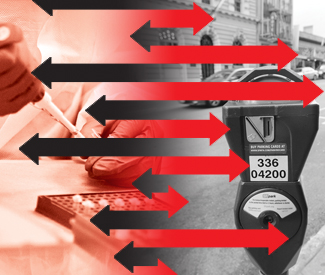


 So paid parking meters benefit many diverse constituents, and even SFMTA Executive Director Ed Reiskin publicly favored them. Making Sunday meters free again wasn’t Reiskin’s idea, he told us back in February.
So paid parking meters benefit many diverse constituents, and even SFMTA Executive Director Ed Reiskin publicly favored them. Making Sunday meters free again wasn’t Reiskin’s idea, he told us back in February.